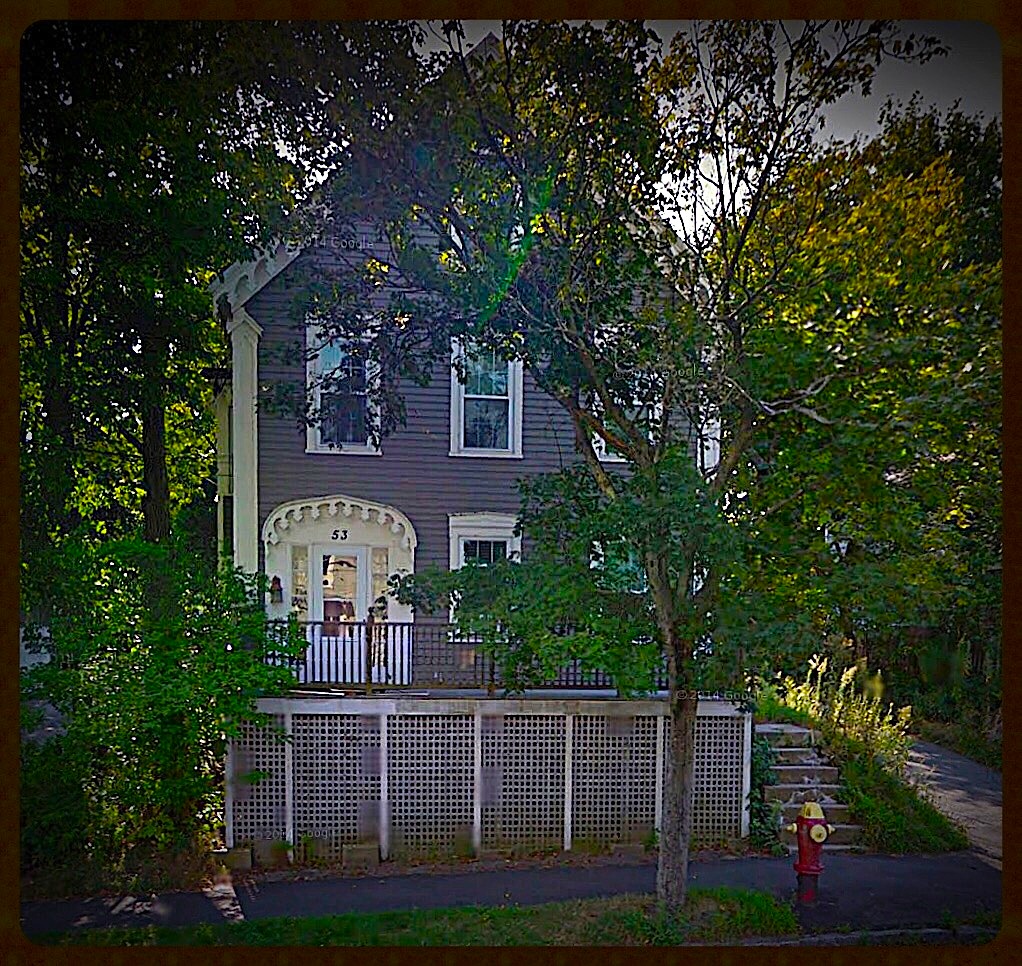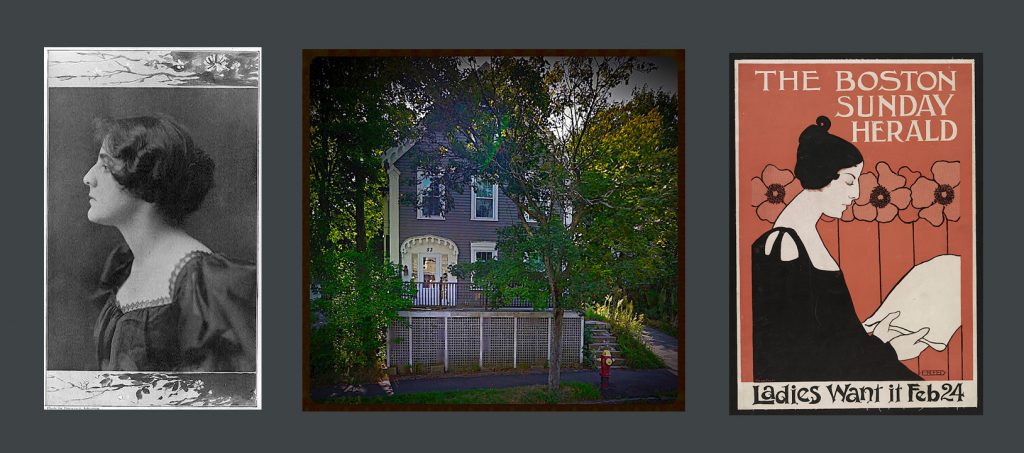This has got to be another one of my favorite stories. Ethel Reed, born in Newburyport, I had never heard of her, and what an intriguing story.
Ethel was born in Newburyport in 1874, her father was Edgar Eugene Reed who married Mary Elizabeth Mahoney. Edgar is listed in the Newburyport City Directory as living at 41 Kent Street which today is 53 Kent Street (a big thank you to the Newburyport Assessors Office for helping me figure out the exact location of where Ethel lived).
53 Kent Street, Newburyport, Google Maps
Her father’s obituary describes him as a “Well Known and Popular Photographer.” Ethel and her family either lived with her father’s family on Kent Street or rented the house.
Very recently Ethel Reed has been “rediscovered.” There is a biography of her now by William Peterson.* I would disagree with Mr. Peterson’s description of the bleakness of Ethel’s early life in Newburyport and the desolation that he describes of Newburyport in general. I ended up with the opinion that Mr. Peterson understands very little about Newburyport, not much about artists (I am one) and very little about women (I am one of those too).
(One of the things that I have discovered looking into all these Newburyport stories is that people often rented houses. In another hunt, in 1836 I found two advertisements for fancy houses on High Street “To be Let,” i.e. rented, with a mention of the people who were currently renting them. One of the other things that I’ve found in all this research is that multi-generations of families, with their children’s spouses and their children lived in the same house. Lots of people lived in one house, unlike today. “Boarders” who are often listed in the Newburyport City Directories were often family members — Abbie Foster, her husband Daniel, and her sister Helen all lived with her mother at 14 Spring Street, and there are just tons of examples.)
Ethel’s life on Kent Street might not have been quite as horrible as Mr. Peterson speculates. There is a glorious sketch of Ethel by none other than Laura Coombs Hill in 1880 when Ethel was 6 years old. The drawing is in the Museum of Fine Arts in Boston — the MFA, really!
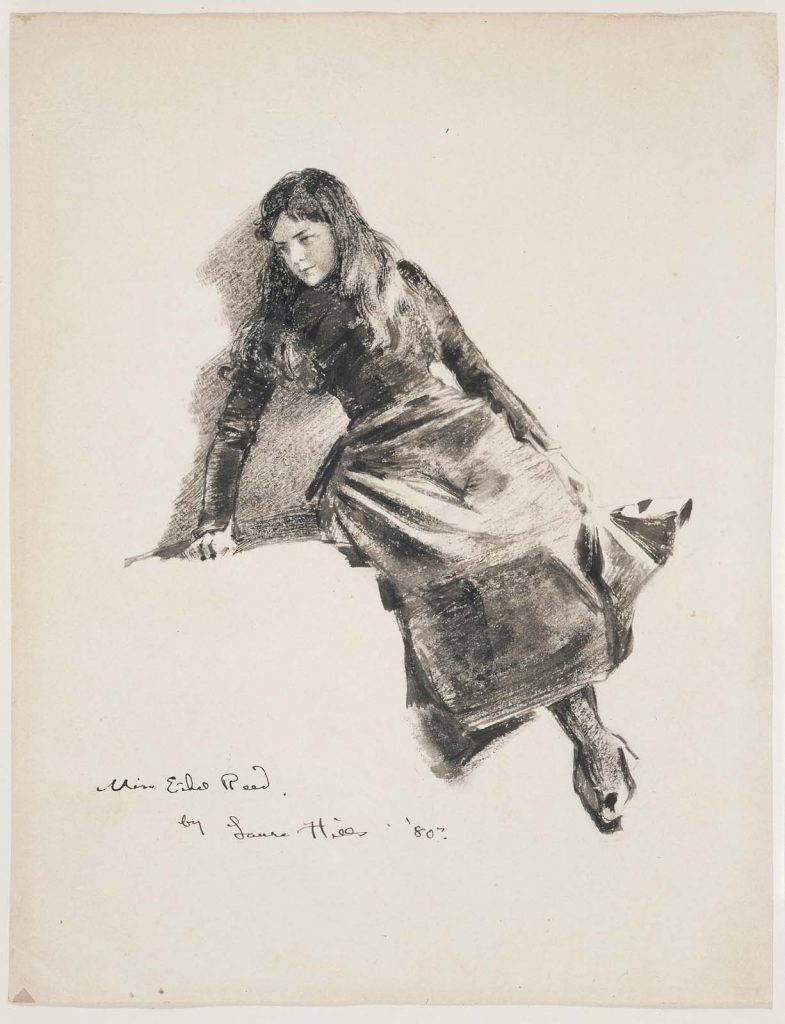
Ethel Reed, by Laura Coombs Hill, 1880, 10 x 7 3/4 inches
Wash and chalk on paper, Museum of Fine Arts, Boston
Ethel Reed, by Laura Coombs Hill, 1880, 10 x 7 3/4 inches
Wash and chalk on paper, Museum of Fine Arts, Boston
In 1890 Ethel and her mother apparently went to Boston (her father died in 1892). The Smithsonian Art Museum has this description of Ethel Reed (yup, the Smithsonian–the Smithsonian, I’m not kidding!).
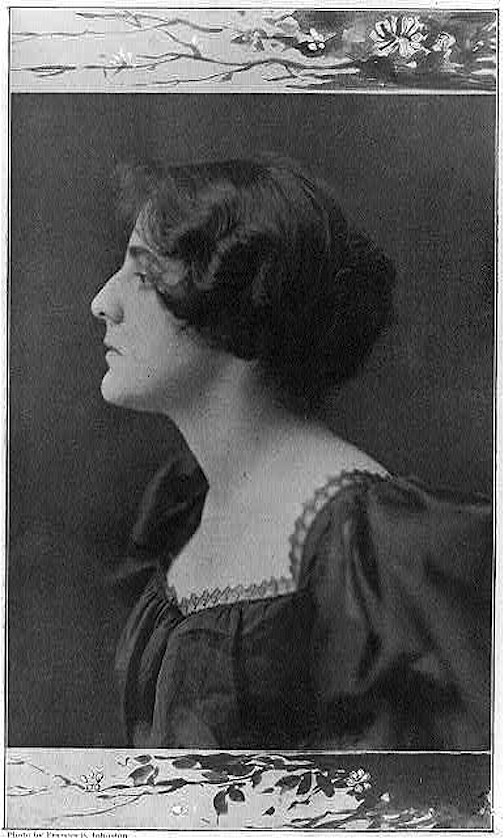
Ethel Reed, Photograph by Frances Benjamin Johnston, courtesy of the Library of Congress Prints and Photographs Division Washington, D.C. 1897
Ethel Reed, Photograph by Frances Benjamin Johnston, courtesy of the Library of Congress Prints and Photographs Division Washington, D.C. 1897
“(Ethel) Reed briefly attended art school in Boston but was largely self-trained. Her circle included artists and writers in both Boston and London. She posed for photographs by Frances Benjamin Johnston and F. Holland Day, and she provided illustrations forThe Yellow Book, an avant-garde British periodical. One of the most talented and prolific artists of the 1890s, she made her name during the poster craze of the period. She produced book illustrations, cover designs, and more than 25 posters, mostly in just two years, 1895 and 1896. Her creative burst earned her international recognition and she traveled to Europe and completed a few commissions for British publications through about 1898. Then she disappeared from the historical record.” **
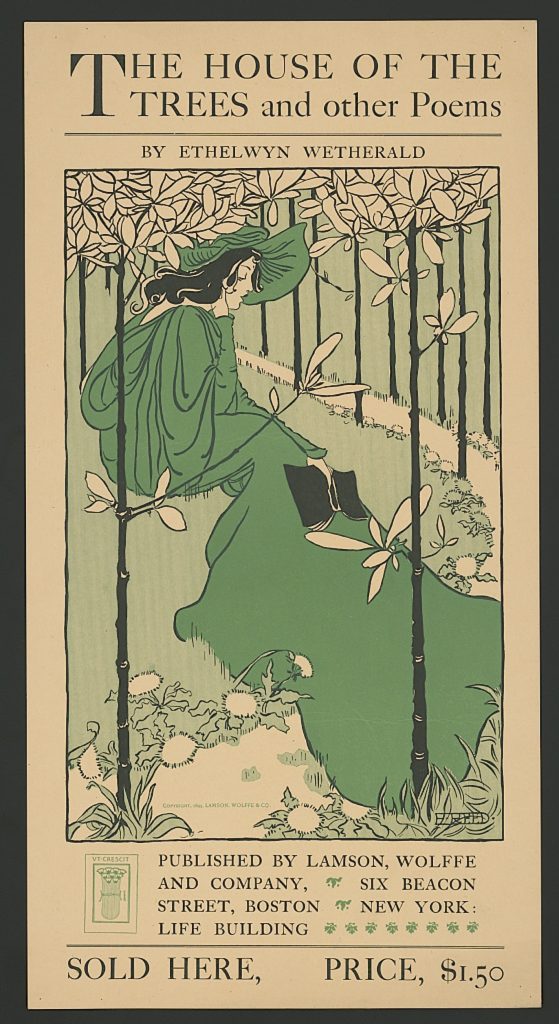
A poster by Ethel Reed, The house of the trees and other poems by Ethelwyn Wetherald
Boston : Lamson, Wolffe, 1895, courtesy of the Library of Congress Prints and Photographs Division Washington, D.C
A poster by Ethel Reed, The house of the trees and other poems by Ethelwyn Wetherald
Boston : Lamson, Wolffe, 1895, courtesy of the Library of Congress Prints and Photographs Division Washington, D.C
There was an art show in Washington DC in 1896 mostly containing Ethel’s art work. The Washington Post describes Ethel Reed as “the foremost woman poster maker in America” and “one of the most beautiful women Washington has seen in ages.” *
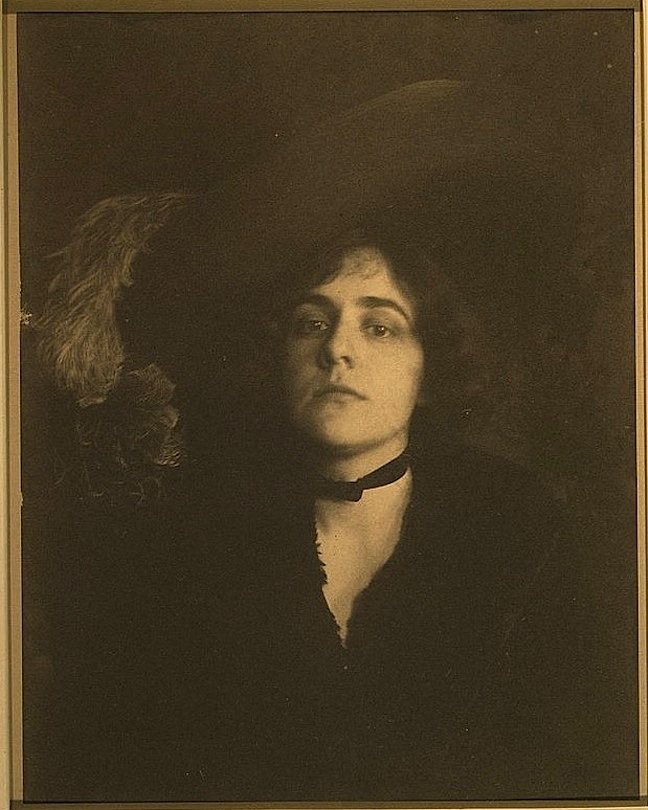
“The Gainsborough hat” Photograph showing a woman (Ethel Reed), head-and-shoulders portrait, facing front, wearing a plumed hat, by F. Holland Day, 1895, courtesy of the Library of Congress Prints and Photographs Division Washington, D.C
“The Gainsborough hat”
Photograph showing a woman (Ethel Reed), head-and-shoulders portrait, facing front, wearing a plumed hat, by F. Holland Day, 1895, courtesy of the Library of Congress Prints and Photographs Division Washington, D.C
Helena Wright, the curator of the Graphic Arts Division at the Smithsonian Art Museum says that the Smithsonian Art Museum has a significant collection of Ethel Reed’s art work, including some of her earliest posters and a few unpublished designs. They were donated by Commander Charlotte Hume, U.S. Navy. The collection descended through Hume’s great-aunts, the Smith sisters of Newburyport, who knew Reed in the 1890s, but they lost touch when she moved to London. Reed presented the Smiths with her first posters soon after they were issued. Many are signed and dated in Reed’s distinctive, bold hand, “Compliments of Ethel Reed.” **
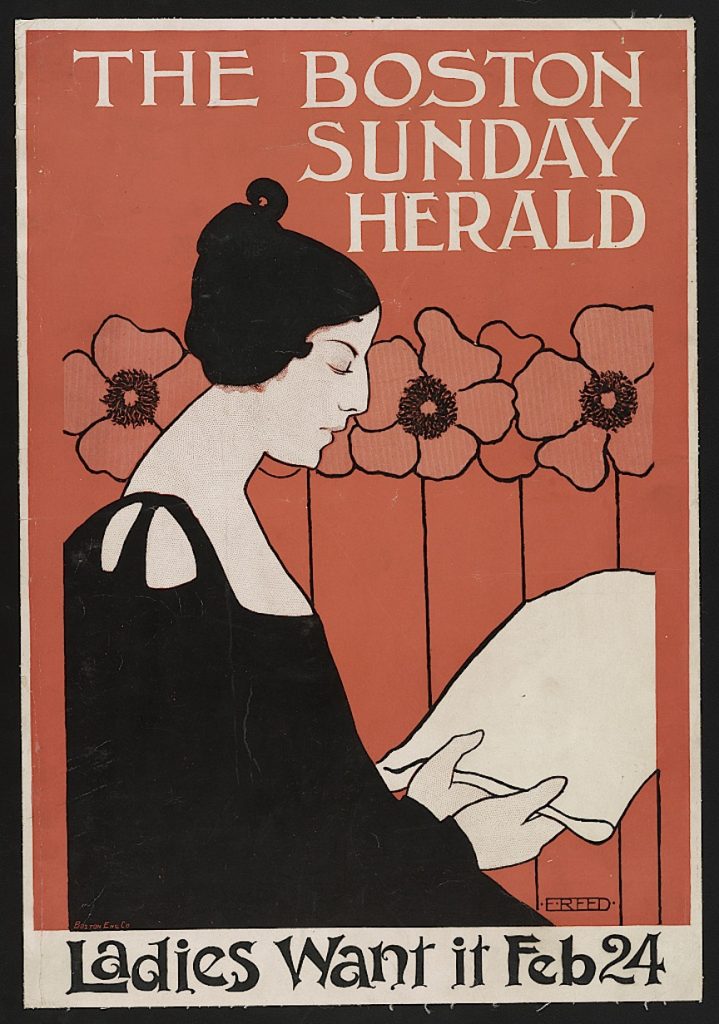
A poster by Ethel Reed, The Boston Sunday Herald, Ladies Want It, courtesy of the Library of Congress Prints and Photographs Division Washington, D.C
A poster by Ethel Reed, The Boston Sunday Herald, Ladies Want It, courtesy of the Library of Congress Prints and Photographs Division Washington, D.C
(This was Ethel Reed’s first poster.**)
Ethel ended up getting engaged to Philip Leslie Hale who was from a prominent, very stuffy Boston family. It appears that the family did not approve of the engagement which was broken off. Philip and Ethel apparently had been planning to go to Paris for their honeymoon and Ethel took off to Paris without him. She ended up living in London, and nothing much is known about her from that time. Apparently she died in 1912 at the age of 36. Her biographer speculates that opium, alcohol and sleeping medication contributed to her death.*
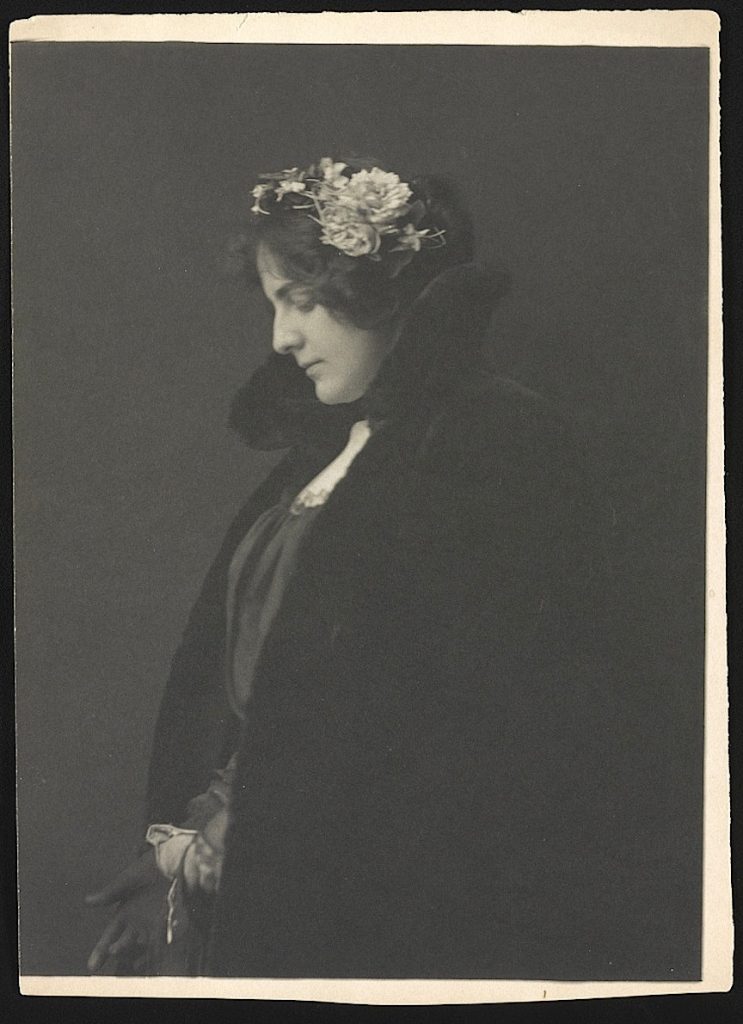
A photograph of Ethel Reed by Frances Benjamin Johnston, courtesy of the Library of Congress Prints and Photographs Division Washington, D.C. 1896
A photograph of Ethel Reed by Frances Benjamin Johnston, courtesy of the Library of Congress Prints and Photographs Division Washington, D.C. 1896
* “The Beautiful Poster Lady, A Life of Ethel Reed” by William S. Peterson, Oak Knoll Press, 2013
** Biography on the Smithsonian website by Helena E. Wright, the Curator of Graphic Arts in the Division of Culture and the Arts at the Smithsonian Art Museum
